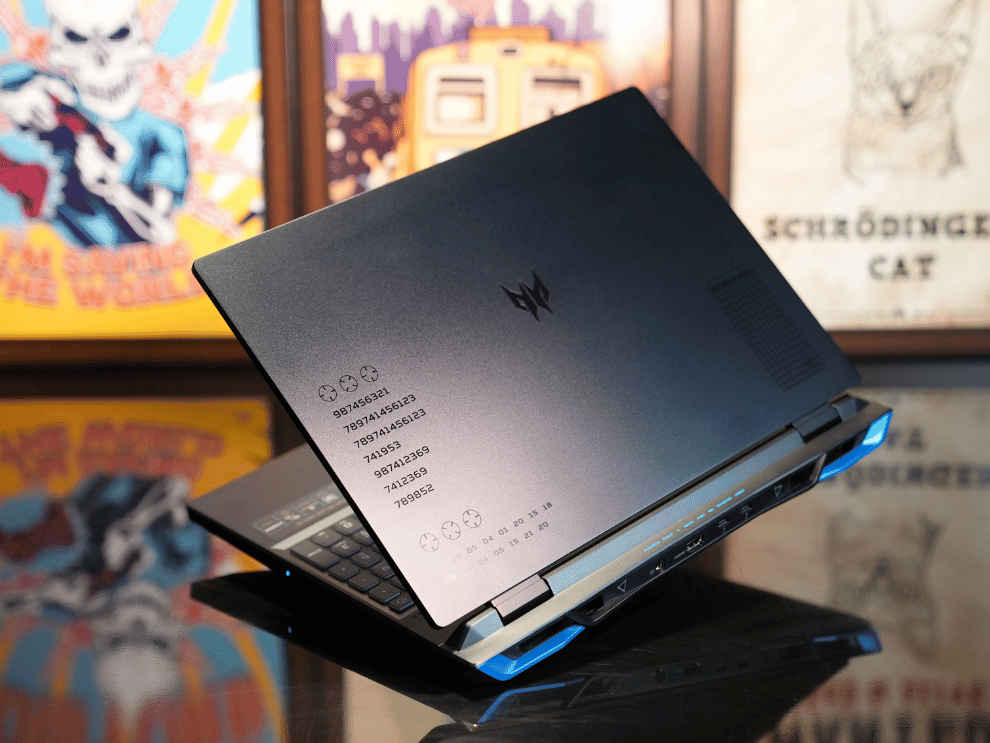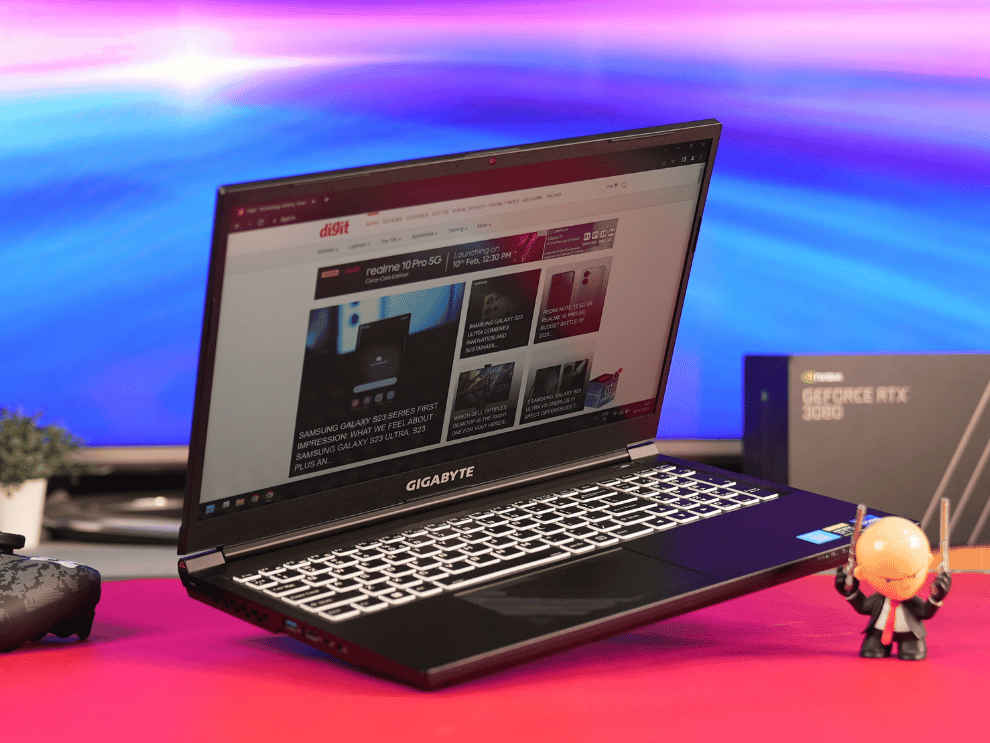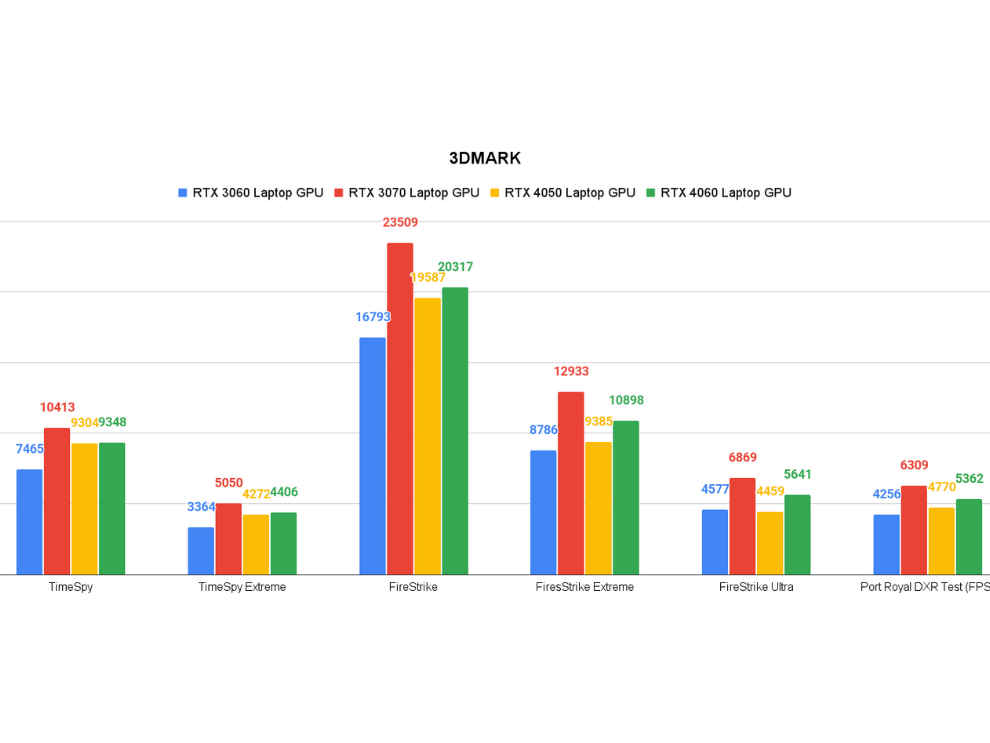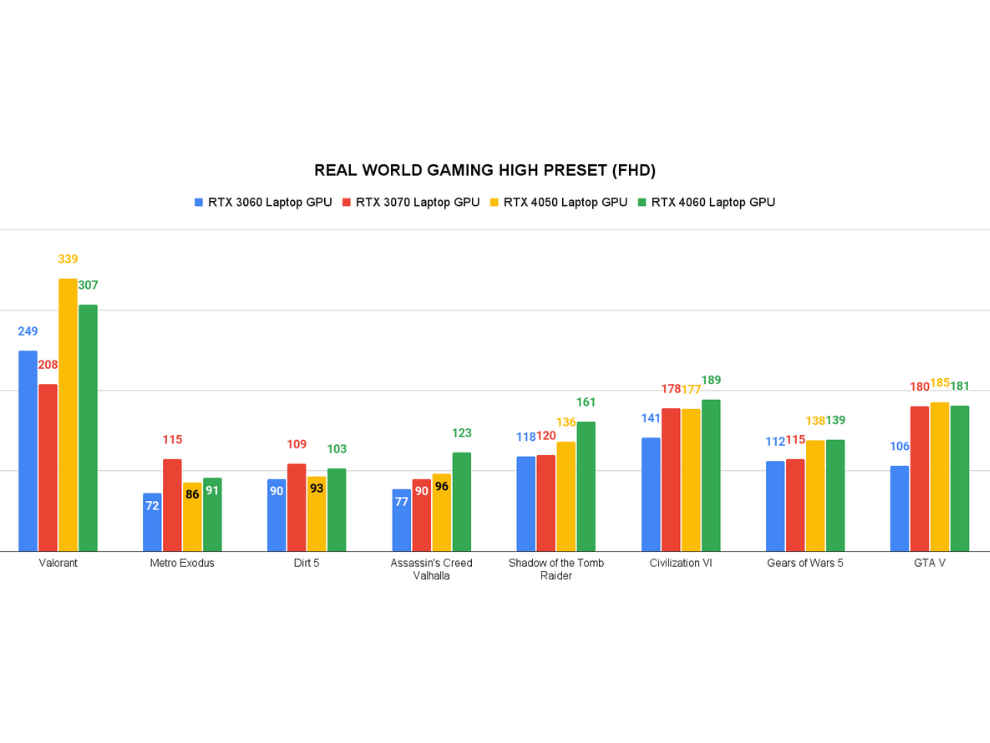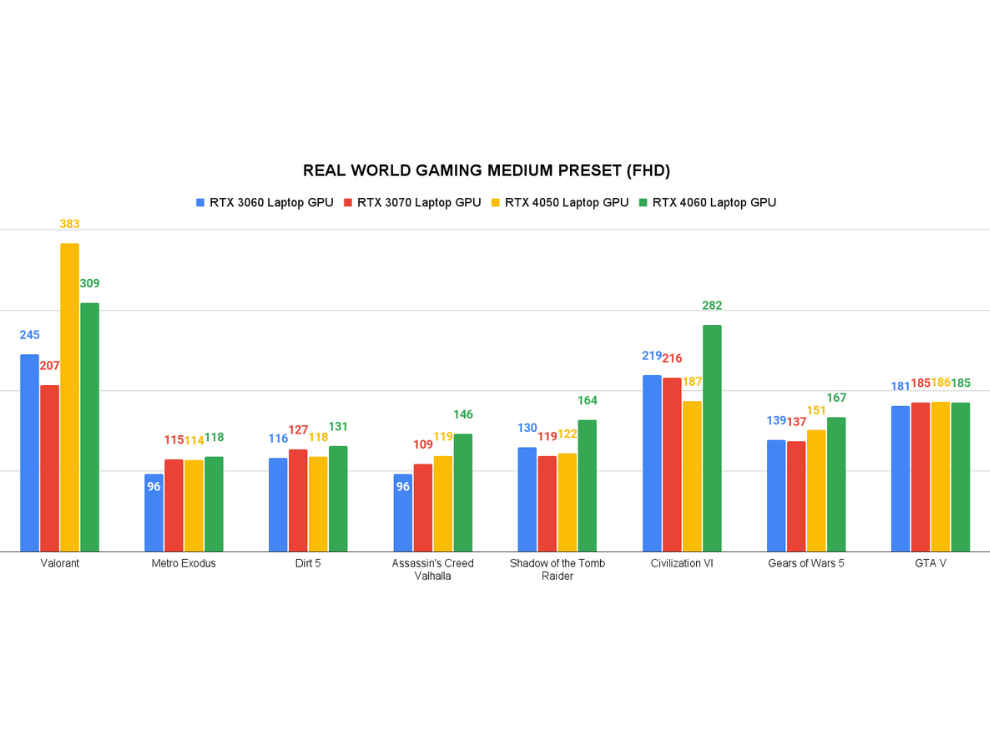Gaming Laptop Graphics Card Comparison: NVIDIA GeForce RTX 4050, RTX 4060, RTX 3060 and RTX 3070 tested and compared
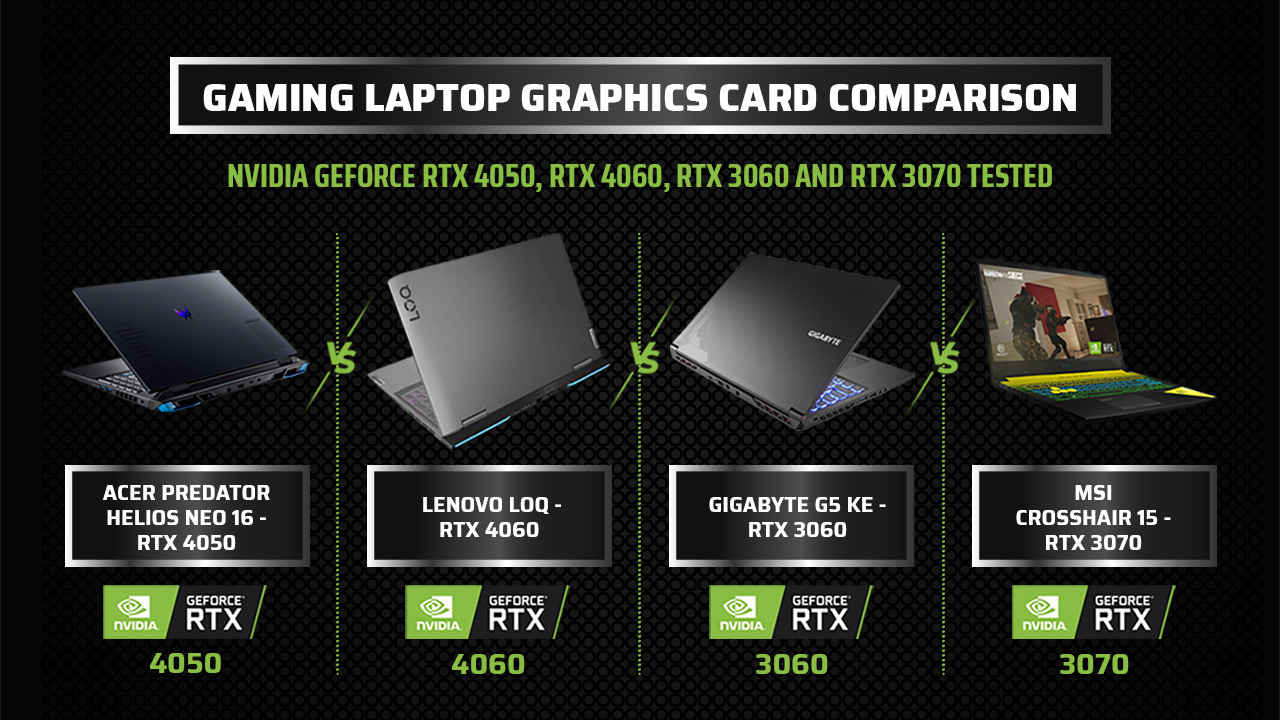
The world of gaming laptops is constantly evolving. Newer hardware and technologies are constantly pushing the boundaries of what a gaming laptop can achieve. This is especially apparent in the budget gaming laptop segment, which is becoming a lot more capable of handling the impressive games that are released nowadays. Now, when we speak of gaming laptops, the most important piece of hardware would be the dedicated GPU or graphics card. This is what drives your gaming performance. We’ve got two major players in the market when it comes to laptop GPUs, the most popular being NVIDIA, and AMD following up close behind. We don’t speak about Intel Arc. Yet.
 Survey
SurveyNVIDIA GPU Comparison Breakdown
In this comparison article, we’re going to be taking a look at NVIDIA’s latest budget gaming GPU offerings, which are the NVIDIA GeForce RTX 4050 and the RTX 4060. We’ve tested quite a few laptops this year featuring the new GPUs. We’ll be comparing them with the NVIDIA GeForce RTX 3060 and RTX 3070 from the previous generation. In terms of pricing, all laptops featuring these laptop GPUs currently retail at around the same price range. So, laptops featuring an RTX 3060 are priced about the same as laptops featuring an RTX 4050. Similarly for the RTX 3070 and the RTX 4060.
The idea behind this article is to help you decide on which laptop GPU you should go for, that will offer both better performance and future-proofing for the next few years. For this comparison, we’ll be comparing laptop GPUs which feature the highest TGP allowed by NVIDIA.
With that out of the way, let’s take a look at our contenders. For all intents and purposes, these are the best laptops we’ve tested so far featuring these GPUs.
Acer Predator Helios Neo 16 (review)
Our first contender is the Acer Predator Helios Neo 16 featuring an NVIDIA GeForce RTX 4050 Laptop GPU. Here is a quick breakdown of the specs and our performance ratings.
Acer Predator Helios Neo 16 Specs
GPU: NVIDIA GeForce RTX 4050 Laptop GPU
TGP: 115W
CPU: Intel Core i7-13700HX
RAM: 16GB DDR5-4800
Price: Rs 1,19,990
Digit Ratings for the Acer Predator Helios Neo 16 (Out of 100)
Performance: 83
Display: 80
Synthetic Benchmark: 78
Real World Gaming: 86
Lenovo LOQ (review)
Our second contender is the newly released Lenovo LOQ, featuring an NVIDIA GeForce RTX 4060 Laptop GPU. Here is a quick breakdown of the specs and our performance ratings.
Lenovo LOQ Specs
GPU: NVIDIA GeForce RTX 4060 Laptop GPU
TGP: 115W
CPU: Intel Core i7-13620H
RAM: 16GB DDR5-5200
Price: Rs 1,14,990
Digit Ratings for the Lenovo LOQ (Out of 100)
Performance: 90
Display: 83
Synthetic Benchmark: 87.5
Real World Gaming: 100 (Highest scores in its price segment so far)
Gigabyte G5 KE (review)
The third laptop in our comparison the Gigabyte G5 KE featuring an NVIDIA GeForce RTX 3060 Laptop GPU. Here is a quick breakdown of the specs and our performance ratings.
Gigabyte G5 KE Specs
GPU: NVIDIA GeForce RTX 3060 Laptop GPU
TGP: 115W
CPU: Intel Core i5-12500H
RAM: 16GB DDR4-3200
Price: Rs 79,990
Digit Ratings for the Gigabyte G5 KE (Out of 100)
Performance: 74
Display: 63
Synthetic Benchmark: 80
Real World Gaming: 78
MSI Crosshair 15 (review)
Our final contender is the MSI Crosshair 15 featuring an NVIDIA GeForce RTX 3070 Laptop GPU. Here is a quick breakdown of the specs and our performance ratings.
MSI Crosshair 15 Specs
GPU: NVIDIA GeForce RTX 3070 Laptop GPU
TGP: 140W
CPU: Intel Core i7-12700H
RAM: 16GB DDR4-3200
Price: Rs 1,40,990
Digit Ratings for the MSI Crosshair 15 (Out of 100)
Performance: 82
Display: 70
Synthetic Benchmark: 96
Real World Gaming: 81
The RTX 3070 features the highest TGP among the cards since the xx70 series cards technically fall under “high-end” GPUs. So it does have a leg up over every other card here in terms of sheer power.
Another thing to note before we get into this comparison is that all of these laptops have different processors. While they’re not vastly different in terms of performance, you will notice some differences in FPS numbers when it comes to games that are processor-intensive. It shouldn’t be by much; the GPUs will still have the largest impact on performance numbers here. With that, let’s get started!
Synthetic GPU performance
We start things off with the synthetic GPU benchmark. We use the 3DMark benchmark to test DirectX 11, DirectX12, and Ray Tracing performance.
As you can see from the graph, the RTX 3070 outperforms every GPU in this comparison. If you consider its TGP of 140W, it makes sense, and there is some merit to it being labelled a higher-end GPU. Everything else is about as expected. You can see the newer RTX 4050 gives better DirectX12 performance than the older RTX 3060. However, the RTX 3060 does better than the RTX 4050 in DirectX11 performance. This is relevant as newer games will run on DX12, but you would get better performance on the RTX 3060 from older titles that do not have or support DirectX 12. The RTX 4060 offers similar DX12 performance to the RTX 4050, but does significantly better in DX11 performance with only the RTX 3070 outperforming it.
Real-world gaming performance
With that, we come to real-world gaming performance. While synthetic benchmarks are a decent enough way to gauge a laptop’s gaming performance, real-world gaming performance is ultimately what matters. All of our real-world gaming tests are done in FHD (1920x1080p) resolutions, and we use the game’s preset high and medium settings.
Based on our synthetic GPU observations, the RTX 3070 should be bagging the win here, but real-world gaming performance numbers tell a different story.
We start things off with the high preset of real-world gaming benchmarks. Despite being the highest-scoring GPU in synthetic benchmarks, the RTX 3070 scores the highest FPS numbers in only two titles. The RTX 4060 comes out as the best performer here with the RTX 4050 offering some serious competition. In fact, the RTX 4050 easily outperforms the RTX 3060 in every single gaming benchmark. Note that all of these titles have DirectX12 support. We should also point out that the laptop with the RTX 4050 in this comparison features the most powerful processor out of the four laptops being compared. That is certainly helping it out a little bit when it comes to the more processor-intensive titles in our list of benchmark games. Especially titles like Valorant.
When we come to the medium preset of real-world gaming benchmarks, the difference becomes even more evident with the RTX 4060 easily having the best numbers in pretty much all titles. Between the RTX 3060 and RTX 4050, the FPS numbers are either very close or higher in favour of the RTX 4050 in most cases.
Based on the FPS numbers from these benchmarks, the RTX 3070 and RTX 4060 are capable of comfortably gaming at QHD resolutions and getting at least 60 FPS. Both these laptop GPUs also come with 8GB of VRAM which certainly helps when it comes to gaming at higher resolutions. The RTX 3060 and RTX 4050 could do higher resolutions as long as you bump the settings down to medium or low, depending on the title you’re playing. However, you can still comfortably play games at FHD and get great numbers across the board. The RTX 3060 and RTX 4050 come with only 6GB of VRAM, which can be a limiting factor when it comes to playing at higher resolutions, however, the newer RTX 40 series cards also come with improved DLSS 3.0 (3.5 soon) and frame generation which greatly helps put out better numbers overall as long as the game you’re playing supports it.
DLSS 3.5 is basically AI rendering which allows RTX GPUs to provide smoother and faster FPS. RTX 40 series GPUs also get frame generation, which allows the cards to “fill in the blanks”, so to speak, by using AI to generate missing frames and maintain consistent and smooth FPS. This feature isn’t present in RTX 30 series cards.
Conclusion – Nvidia GeForce RTX 4050 based laptops offer the best bang for the buck
With that, we’ve come to a conclusion for our comparison. While the NVIDIA GeForce RTX 3070 offers the best synthetic benchmark performance across the board, the RTX 4060 comes out on top when it comes to real-world gaming performance. If you’re simply looking for the best entry-level gaming laptop GPU, then the RTX 4060 is your best bet here. If you are getting a better deal on an RTX 3070 laptop, however, it might be worth considering. Just remember to keep the TGP in mind as that can greatly affect a laptop’s gaming performance. This applies to any gaming laptop you’re thinking about picking up; an RTX 4060 can be outperformed by an RTX 4050 with a higher TGP. If you’re on a tighter budget, then consider going for the RTX 4050 over the RTX 3060 as it does provide better overall gaming performance, especially in newer titles. The benefits of DLSS and frame generation also give it a leg up here. Overall, we would advise going for a newer RTX 40 series gaming laptop to fully utilse the new technology that NVIDIA has on offer and enjoy a better gaming experience.
Manish Rajesh
Manish can usually be found fervently playing video games of all kinds or… no wait he’s pretty much always playing games View Full Profile
